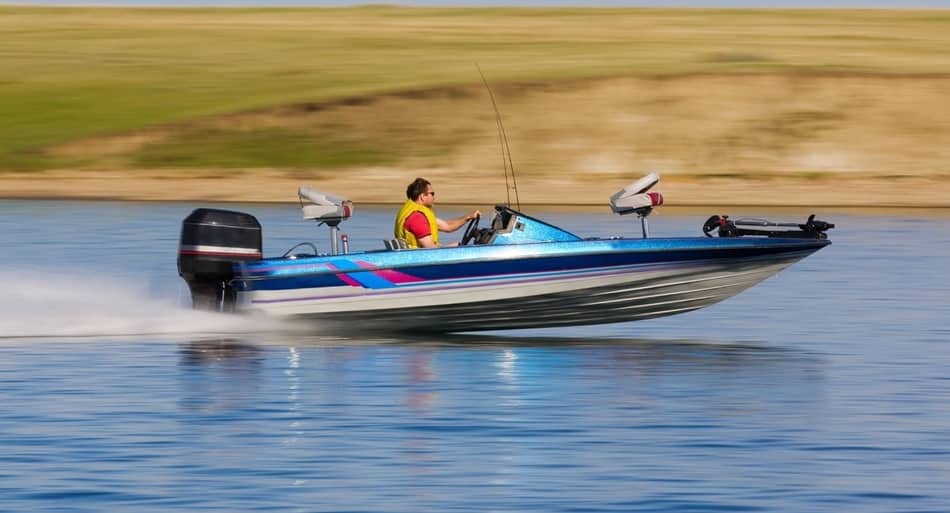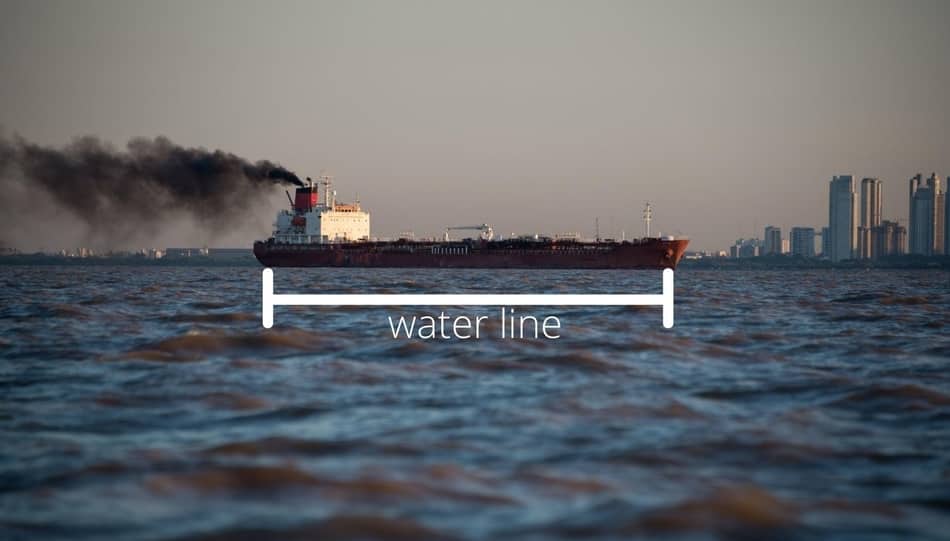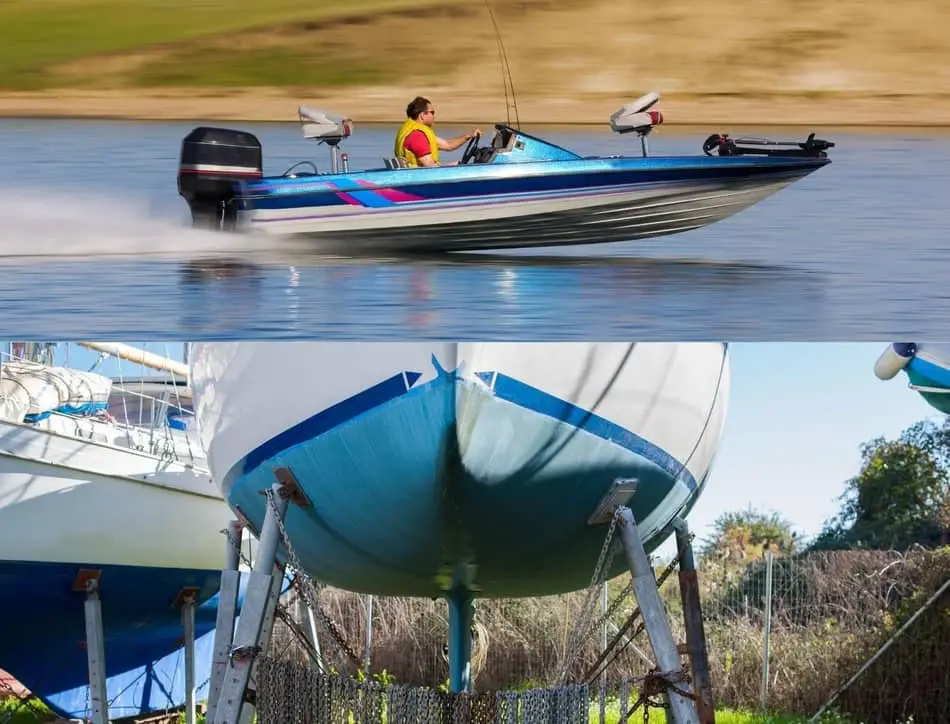Everyone likes to go fast in a boat and reach the destination quickly. But, all the time, boats won’t allow you to go fastly, it may be due to many reasons. Here are some essential factors that affect the speed of your boat.
- Length of the boat
- Water temperature
- Hull design
- Bow design
- Boat weight
- Water depth
- Anything that is attached or stuck to the boat hull.
All those factors listed above affect the boat speed. Some of them (length, bow, and hull designs) are needed to considered while buying a boat. And some of them (decreasing the boat weight and not attaching anything to the hull) are required to be done regularly to increase the boat speed. Some other like water temperature and water depth, you can’t change them.
The main reason behind the slowness of a boat is friction (water friction). When you keep the boat in water, it displaces the same amount of water space in the water, which is equivalent to the weight of the boat. Meaning, if your boat weighs 1000 pounds and you kept your boat in water, the boat displaces the same space in the water, which is equivalent to 1000 pounds.
Whenever you are boating in water, the boat is displacing (pushing the water away) the boat’s weight of water, every time. Since the water is denser, friction is more. All those factors are used to decrease the friction, which increases the boat speed.
Check my article on Why boats are slower than cars (don’t worry, it will open in new tab) to know what affects the boat to travel at the speed of a car.

1. Length of the boat
The length of the boat will affect boat speed. If the length of your boat is big, then your boat maximum speed will be more, and if the length of your boat is small, then it will be less. The length of the boat is directly proportional to speed. If the length is more, then the maximum speed is more.
The maximum speed (Hull speed in knots) comes from the formula 1.34 times square root of the waterline (in feet). Waterline is the overall length of the boat (from bow to stern) that is submerged in water.

If the waterline length is 25 feet, then the maximum speed of the boat will be the square root of 25 times 1.34, which is equal to 6.7 knots. Meaning the maximum speed of the boat, which it can travel is 6.7 knots per hour. Still, you can try increasing the speed by removing the extra weight in the boat, and design also changes the speed.
Overall, if the boat length increases, the waterline length increase, then the maximum speed will increase. That is the reason why the boat length is directly proportional to the length of the boat. If the length of the boat is more, then the maximum speed of the boat will be more.
2. Water temperature
Water temperature affects the boat speed. Suppose, if the water temperature lowers, then the viscosity increases. If viscosity increases, then intermolecular attraction between the molecules in the water increases. So, it decreases the boat speed in cold water.
Viscosity increases with a decrease in water temperature. If water temperature decreases, then viscosity increases (meaning the intermolecular attraction between the molecules in the water increases). So, the boat speed decreases if water temperature decreases.
Check my article on Do boats go faster in cold waters? (don’t worry, it will open in new tab) to know more about the reduction of the boat speed in cold waters.
3. Hull design

The hull design of the boat will affect the boat speed. The displacement hull boat will go slower than a planing hull boat because the planing boat have planes at the bottom of the hull, and they lift the front end of the boat (bow) in air, and it allows the boat to go fast.
So, hull design will affect the boat speed. That lift of the bow of a planing hull boat will help the planing hull boat, to go faster than a displacement hull boat in the water. When you keep the boat in water, it displaces the same amount of water space in the water, which is equivalent to the weight of the boat.
Meaning, if your boat weighs 1000 pounds and you kept your boat in water, the boat displaces the same space in the water, which is equivalent to 1000 pounds. Whenever you are boating in water, the boat is displacing (pushing the water away) the boat’s weight of water, every time.
The planing hull boat will try to lift the boat in the air, and thereby the planing hull boat will prevent pushing most of the water on its way. In the above figure, it clearly shows the planing hull boat is not at all pushing the water on its way.
Whereas for a displacement hull boat, it is not like that, the displacement hull boat will push the water on its way. On top of its (boats) own weight, it also must move an almost equal weight of water out of its way. Meaning the displacement hull boat is moving twice its weight of water out of its way.
The displacement hull boat tries to push the water out of its way, so, the displacement hull boat will move slowly. Whereas, the planing hull boat is lifting its bow in the air, thereby not at all pushing much water out of its way, so, the planing hull boat will move faster than a displacement hull boat.
Overall, this is how the speed of the boat will get affected by the hull design of the boat.
4. Bow design
Bow design also affects the boat speed. If the boat bow is broader, the boat needs to push the water in the forward direction, which causes the boat to move a little bit slower than a less broad bow, which pushes the water a little bit sideways, which will not decrease speed much
Both the bow designs will push the water. The angle at which both the boats pushes will matter most. The broader bow (bluff) designed boat will push the water in a forward direction causing your boat to slow down a little bit. The less broad bow (fine) designed boat will push the water a little bit sideways, causing your boat not to decrease the speed much.
5. Boat weight
If the boat weight is more, then the boat displaces more water, and it needs to push more water out of its way as well, which slows down the speed of the boat. Similarly, a boat with less weight displaces less water, and it pushes less water out of its way, which doesn’t decrease the speed much.
So, if the weight of the boat is more, then it decreases the boat speed. When you keep the boat in water, it displaces the same amount of water space in the water, which is equivalent to the weight of the boat. Meaning, if your boat weighs 1000 pounds and you kept your boat in water, the boat displaces the same space in the water, which is equivalent to 1000 pounds.
Whenever you are boating in water, the boat is displacing (pushing the water away) the boat’s weight of water, every time. If the boat weight increases, then it displaces more water, and it needs to push more water out of its way as well.
On top of its (boats) own weight, it also must move an almost equal weight of water out of the way. Meaning the boat is moving twice its weight of water out of the way. That’s why the speed of the boat decreases if the weight of the boat increases.
So, try to reduce your boat weight by removing all the unnecessary things from the boat to increase your boat speed.
6. Water depth
Shallow waters decrease the boat speed because the water flowing under the boat moves quickly in shallow water, thereby creating high velocity. High velocity at a point in liquid creates low pressure; thus, the boat sinks more and displaces more water. So, the boat needs to push more water out of its way, which decreases the speed.
The draft of the boat will increase in shallow waters because, in shallow waters, the boat will be moving so close to the ground, and there is less space for the water to flow under the boat, which increases the water flow under the boat (velocity at that particular point in the water increases).
From Bernoulli’s principle, if the velocity is high at any point in the liquid, then there is a corresponding drop in the pressure at the point. Generally, the pressure is required to lift the boat in the water, and if that pressure decreases, the boat will sink more in water, thereby increasing the draft.
If the draft increases, then the boat displaces more water space in the water, and the boat needs to push more water out of its way. Pushing more water out of its (boats) way means, the boat takes more power and time to push that extra water out of its (boats) way. So, it will decrease the boat speed in shallow waters and takes more time to cover a small distance in shallow waters.
Not all types of boats go faster in shallow waters. Planning hull boats go faster in shallow water because the planing hull boat lifts the boat bow in air, which prevents pushing all the water out of its way like a displacement hull boat. So, the planing hull boat goes faster in shallow waters.
Check my article on Why does a boat speed slows down in shallow waters? (don’t worry, it will open in new tab) to know more about what affects the boat speed in shallow waters in detail.
7. Anything that is attached or stuck to the boat hull
If anything stuck or attached to the hull will affect the speed of the boat. If there is a depth sensor or any barnacles stuck to the boat hull, then the water will not slide over them smoothly. They create some disturbance in the water flow. So, this decreases the boat speed a little bit.
If the boat hull is smooth, only then water will slide over the hull smoothly. Otherwise, it causes some disturbance and gradually decreases the speed of your boat. Barnacles also affect boat speed. So, clean the boat hull regularly to increase the speed a little bit.
Even if you have a keel, it will affect the speed of your boat. Keel means weight, meaning you are adding extra weight to your boat. It displaces more water and creates more friction, and the boat needs to push more water out of its way. So, it decreases the boat speed.
Overall, anything that is attached or stuck to the hull, such as barnacles, depth sensor, keel, etc. will decrease your boat speed. So, try to avoid sticking anything to the hull to increase the boat speed.
Bottom line
Those are the main things that affect boat speed. The boat speed will decrease even if you are not using an appropriate propeller. So, if you have a displacement hull and broader bow, then it may be tough to increase your boat speed.
